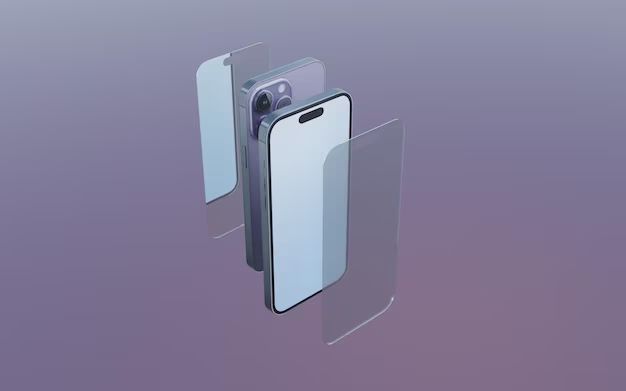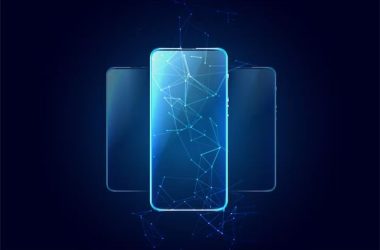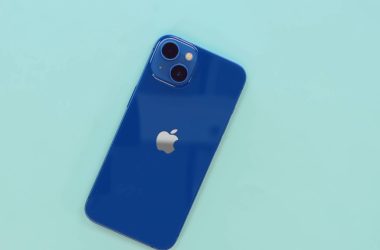As one of the most popular smartphones on the market, iPhones have a thriving resale market. Many people choose to resell their older iPhones when upgrading to a newer model in order to recover some of their initial purchase cost. However, the condition of the iPhone – especially the screen – plays a major role in determining its resale value. Cracked or scratched screens can dramatically reduce what buyers are willing to pay.
Using a high-quality screen protector is an inexpensive way to protect the iPhone screen from getting damaged. iPhones with pristine screen condition tend to sell for much higher prices compared to phones with cracked or scratched screens. By preventing screen damage, a screen protector can help boost and maximize the resale value of an iPhone.
Screen Damage Lowers Resale Value
Screen damage such as cracks and deep scratches can significantly reduce the resale value of an iPhone. According to BankMyCell, an iPhone XR with a cracked screen has an average trade-in value between $20-$97, compared to $192-$289 for one in good condition (1). For older models like the iPhone 8, a cracked screen reduces the trade-in value from around $80 down to just $30.
Apple themselves do not accept iPhones with cracked screens for trade-in, and will only recycle them for free (2). Most other major carriers and retailers also offer substantially less money for iPhones with cracked or scratched screens compared to pristine condition models.
Statistics clearly show that screen damage can slash the resale value of an iPhone by 50% or more. Protecting the screen is therefore critical for retaining maximum value when it comes time to upgrade or trade-in the device.
How Screen Protectors Prevent Damage
Screen protectors work by adding a protective layer on top of the iPhone’s display to absorb impact and prevent scratches. The most common types of screen protectors are:
- Tempered glass – Made from tempered glass, these are very thin and extremely scratch-resistant. The glass is designed to shatter on impact, dissipating force away from the iPhone’s display. Studies show tempered glass protectors can prevent cracks from drops of up to 5 feet. Source
- TPU – Made from flexible thermoplastic polyurethane (TPU) plastic. These absorb shock and are self-healing, meaning small scratches disappear over time. Provides decent impact protection but less scratch resistance than glass. Source
- PET film – Made from polyethylene terephthalate (PET) plastic film. Very thin and optically clear. Not as protective as glass or TPU but provides basic scratch protection.
The materials and thickness of the protector determine its shock absorption. Tempered glass provides the best impact protection while TPU is a good mid-range option.
Proper Installation
To ensure longevity and effectiveness, it is critical to properly install the screen protector using best practices. According to WikiHow’s guide How to Apply a Screen Protector, key steps include:
- Thoroughly cleaning the phone screen with a lint-free cloth before application
- Using guide stickers or tape to help align the protector
- Gently lowering the protector and pressing out bubbles to adhere it
- Slowly removing any guide stickers or tape
- Re-pressing around the edges to secure full adhesion
Following this careful process helps minimize air bubbles, debris, and misalignment that could undermine protection or aesthetics. Properly installing a quality screen protector as directed is essential to getting its full protective and value-retaining benefits when reselling an iPhone.
Maintenance
To keep your screen protector looking good and functioning properly, it’s important to clean it regularly. Dust, dirt, and oils from your fingers can accumulate on the surface, reducing visibility and sensitivity.
Use a microfiber cloth designed for cleaning screens and devices to gently wipe away smudges and fingerprints. If needed, you can dampen the cloth slightly with water or a 50/50 mixture of water and isopropyl alcohol. Avoid using paper towels or tissues, which can leave lint behind. As noted by Gazelle, you can also rinse the sticky side of the protector under cool water and use a tiny amount of dish soap to clean it, then let it fully dry before reapplying.
Over time, scratches and wear will degrade the protector’s performance. Plan on replacing your screen protector every 6-12 months to maintain optimal protection. Look for bubbling around the edges or scratches across the surface as signs it may be time for a new one. Replacing the protector regularly helps ensure your phone’s screen stays pristine.
Impact on Phone Value
Having a screen protector can significantly increase the resale value of an iPhone. According to discussions on the Apple Support Communities forum, iPhones with pristine screens tend to command higher resale prices compared to phones with damaged screens (Source). A screen protector prevents scratches, cracks and other damage from occurring in the first place.
For example, an iPhone XS Max with no screen damage may sell for $600, whereas the same phone model with cracked glass could only fetch $400. By using a screen protector from the start, owners can ensure their iPhone retains its maximum resale value down the road. Both Apple and third party services allow trade-ins with screen protectors installed (Source). The protector will be removed during inspection to check the actual screen condition.
Reddit users also commonly cite protection of resale value as a key reason to use screen protectors on iPhones. Since iPhone screens can easily get scratched or cracked without protection, but remain in perfect shape with a protector, it dramatically impacts the price the phone can be sold for later (Source).
Other Protective Accessories
In addition to screen protectors, there are other types of protective accessories that can help maintain your iPhone’s value when reselling.
Cases and bumpers are popular accessories that protect the entire phone from drops and scratches. Apple’s official iPhone cases come in a variety of styles like silicone, leather, and clear. High quality cases from reputable brands can preserve your iPhone’s condition. Bumpers are minimal cases that just cover the edges and corners of the device.
Skins or decals are thin vinyl wraps or stickers that adhere to the iPhone’s exterior. They defend against minor scratches and scuffs on the sides and back of the phone. Brands like dBrand and Slickwraps offer skins in diverse colors and textures to customize the look.
Using protective accessories like cases, bumpers, and skins along with a screen protector provides comprehensive protection for your iPhone. This helps retain its visual appeal and value for future resale.
Protecting Other Parts of the Phone
While screen protectors are the most important accessory for protecting an iPhone’s value, it’s also important to protect the back glass, buttons, and ports.
The back glass on newer iPhones like the iPhone XR and later is made of glass and can easily crack if dropped (BodyGuardz). Applying a full body skin or case can help prevent cracks and scratches.
The physical buttons on an iPhone are used constantly and can wear down over time. Using a case with raised button covers protects the real buttons underneath. The ports can collect pocket lint and debris which can affect charging – using port plugs when not in use keeps them clean.
Taking steps to protect all sides and surfaces of the iPhone, not just the screen, will help maximize the phone’s condition and in turn it’s resale value. A pristine device always sells for more.
When to Remove Protector Before Sale
Before selling or trading in your iPhone, it’s generally recommended to remove the screen protector. This allows the buyer or trade-in company to inspect the actual screen for any damage. According to Apple’s support page, “Remove all screen protectors and/or phone cases” before trading in your device https://support.apple.com/en-us/102914.
Removing the screen protector gives a clear view of the screen’s condition. Any scratches, cracks or other defects will be visible. You’ll want to test the screen after removing the protector. Turn it on and inspect for any problems like dead pixels or unresponsiveness. This ensures you don’t miss any existing damage before selling or trading in the phone.
A clean, damage-free original screen will maximize the phone’s resale or trade-in value. So take off the protector to showcase the true condition. Just be very careful when removing it to avoid causing any new damage to the screen.
Conclusion
In summary, using a high-quality screen protector is one of the best ways to boost an iPhone’s resale value. With screens accounting for a large percentage of phone repairs, a protector that shields the display from scratches, cracks, and shattering can make a big difference in the phone’s condition and valuation. Proper installation and maintenance of the screen protector are key to ensuring it continues offering maximum protection throughout the phone’s lifetime. Removing the screen protector before selling the iPhone allows buyers to inspect the pristine screen underneath, potentially increasing perceived value and resale price. Along with protecting the screen, using cases and bumpers to shield other fragile components can further preserve the phone’s condition. With iPhones retaining their capabilities for many years when well cared for, the small investment in protective accessories yields dividends when the time comes to upgrade to a newer model.



